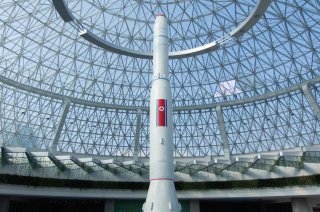Nuclear Diplomacy with North Korea Is Not Yet Exhausted
North Korea will never give up its nuclear weapons as of 2023, but this does not spell the dead end of nuclear diplomacy.
With the world slowly gathering speed again to the pre-COVID pace, 2023 is proving to be a year of fast-paced changes in world politics as leaders regain the momentum for face-to-face meetings, including Kim Jong-un. Leaders met and produced joint statements, marking the beginning of a possible epochal shift in the regional security order that could lock in North Korea’s current security outlook. South Korea and Japan agreed to move on from historical issues in March. Subsequently, Japan, South Korea, and the US proclaimed the beginning of a new chapter of trilateral relations as they performed their friendship at the Camp David Summit in August, marking the beginning of new (or renewed) tensions as China accused the trio of starting a “new” Cold War. The other “camp” of the new Cold War—China, Russia, and North Korea—has also put on their performance of comradeship, beginning with North Korea’s hosting of a Chinese delegation in commemoration of the end of the Korean War in July to the recent summit between Kim Jong Un and Vladimir Putin.
North Korea also “normalized” its missile launches and tests but at a quicker pace—its missile test frequency in 2022 hit more than 70, making 2022 the year of greatest frequency. The DPRK strives to perfect its missile delivery capabilities in 2023 by conducting strategic cruise missile tests and launching a solid-fueled ICBM in July. Some of these tests and launches are purportedly in response to US-South Korea’s military exercises, which have been conducted in response to North Korea’s missile tests and launches, resulting in a tit-for-tat, action-reaction. However, this tit-for-tat pattern alone does not indicate North Korea will not give up its nuclear weapons.
A more pertinent indicator of North Korea’s unwillingness to relinquish its nuclear weapons is the domestic institutionalization of its nuclear power status, as reflected in two recent moves.
First, Kim Jong Un formally introduced his daughter, Kim Ju Ae, to the world in November 2022 as they visited a missile test launch site. Whether she is his successor is uncertain, given that the North Korean leader allegedly has an older child. What matters is that her public appearance is not only propaganda but is part of Chairman Kim’s effort to pass down the “family-institutional” memory of the Kim regime and the centrality of nuclear weapons and missiles to its longevity. By educating his daughter on North Korea’s achievements, Kim may hope his efforts and those of his ancestors to achieve nuclear power status live on with his children.
Second, in September, North Korea enshrined its nuclear power status in its constitution, further institutionalizing its nuclear state status proclaimed in 2013. Kim justified the institutionalization by securitizing the trilateral military cooperation between Japan, South Korea, and the United States, calling it the “worst actual threat.” This comes after institutionalizing the use of nuclear weapons for preemptive purposes last year. With the enshrinement and gradual elevation of its self-recognition would come North Korea’s demands for international recognition of its nuclear power, not its nuclear weapons.
All these recent movements do not negate the efforts to re-engage North Korea. The nuclear anxiety of 2017 dissipated with efforts to thaw in 2018–2019. During this period of liminality, North Korea flirted with the idea of denuclearization and diplomatic normalization with the United States, leaving the world holding its breath at the crossroads between peace and a nuclear war. The world was close to a relatively more peaceful era. A return to this liminal period remains possible, as 2017 has proven. But as the clock ticks, the bar for getting North Korea to start a dialogue will only rise.
Minseon Ku is a Rosenwald postdoctoral fellow at the John Sloan Dickey Center for International Understanding at Dartmouth College.
Image: Shutterstock.

